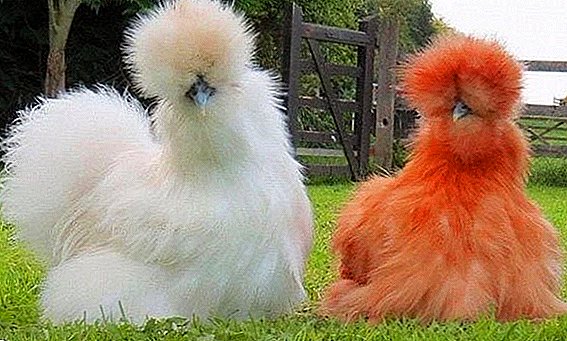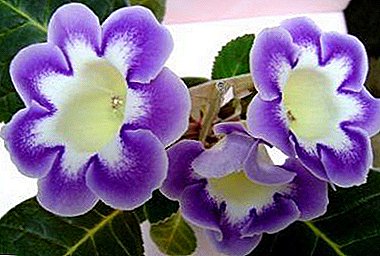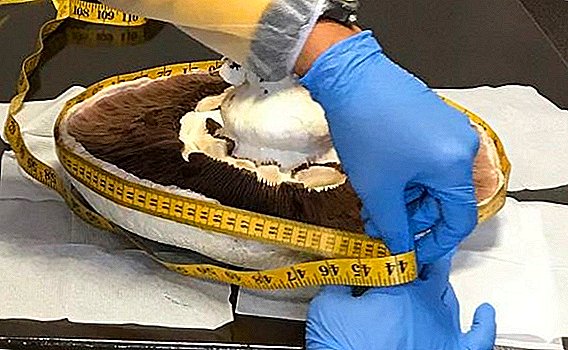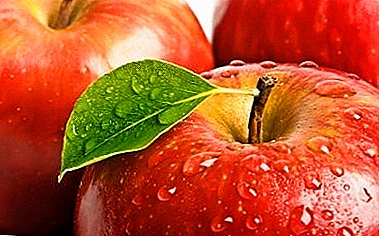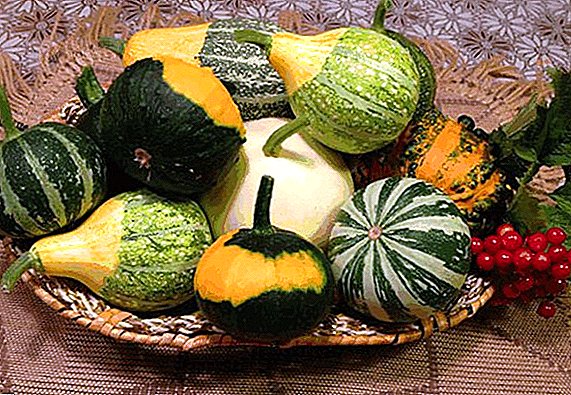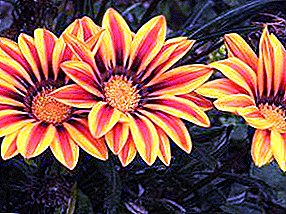 Rhododendrons are very popular among residents of the Moscow region and Leningrad region, since the climate of these areas is most suitable for these capricious inhabitants of the gardens. In order to grow a healthy and beautiful plant, you must follow certain rules and adhere to the recommendations regarding their maintenance and care. Consider them in more detail.
Rhododendrons are very popular among residents of the Moscow region and Leningrad region, since the climate of these areas is most suitable for these capricious inhabitants of the gardens. In order to grow a healthy and beautiful plant, you must follow certain rules and adhere to the recommendations regarding their maintenance and care. Consider them in more detail.
Description and photo
Rhododendron is one of the largest family of heather and was first isolated in 1753. In the wild, it can be found in America, Asia, Japan, as well as in China. 
This type can grow as one by one and in groups. He is also a inhabitant of tundra and wetlands.
Rhododendrons can grow in the form of shrubs, and in the form of small trees. Plant evergreen, semi-evergreen and deciduous. Bushes can reach a height of 10-100 cm, while trees - right up to 30 m. 
There are about 1000 or more species of rhododendrons, so its leaves can take very different shapes and sizes. The flowers of both sexes, inflorescences are racemose or corymbose shape, sometimes placed in one or two. The corolla has a twisted look, there are yellow, pink or purple hues.
The fruits of this plant are presented in the form of a five-leaf multi-seeded box, which opens upwards and downwards.
Below is a photo of this shrub. 
Growing varieties
For the cultivation of rhododendrons in the Moscow region or Leningrad region, you must choose only frost resistant varieties.
So, for growing in central Russia best fit:
- Some varieties of deciduous rhododendrons, for example, a variety Western Light;

- Hybrids of the Yakushima rhododendron: Anna H. Hall, MistMaiden, Ken Janeck;
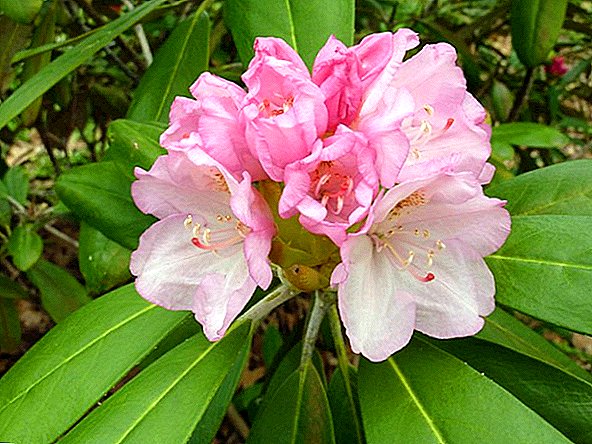
- Katevbinsky hybrids: varieties Alfred, Boursault, Catawbiense Grandiflo rum, Abraham Lincoln;

- varieties of short fruit: Flauntado, Haaga;

- Williams rhododendron: variety Irmelies.
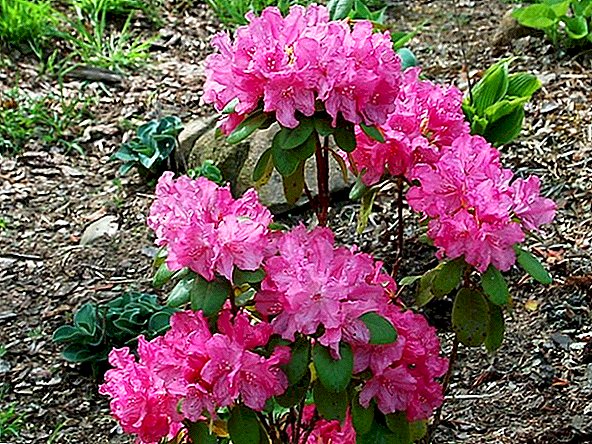
How to choose a place in the garden?
Planting and caring for a garden rhododendron is a fairly important process, requiring a lot of attention and effort. It is recommended to carry out the landing procedure in the period from April to mid-May or from September to November. There are no particular restrictions on this, but avoid the flowering period and two weeks after that.
Also plays a big role choice of neighbors for such a plant. Do not place a linden tree, chestnut, maple or willow next to it, as their root systems are located approximately at the same depth and can deprive your “pupil” of vital nutrition. Apple, pear, pine or oak can be ideal neighbors.
Important! If there is no possibility of planting rhododendron separately from unwanted neighbors, protect its roots by digging into the soil of ruberoid, slate or polyethylene.

Sun or shade?
This capricious garden dweller is best suited. shaded area preferably in the northern part of the building.
In addition to rhododendron, shade-loving shrubs are also: jasmine, barberry, gooseberry, filbert, forsythia, euonymus and magony.
Optimum soil
For planting, loosened soil is ideal, which is well drained and contains a large amount of humus.
Planting seedlings
Planting and caring for rhododendron in the open field is necessary carry out in a certain way, including the following steps:
- First of all, prepare a landing pit, which has a diameter of 60 cm and a depth of 40 cm. Pour a special mixture there, which is prepared from 8 buckets of top peat and 2 buckets of clay.
- Carefully tamp the sprinkled mixture in the pit, then make a well in the form of a hole that follows the shape of the root of your seedling.
- Straight before planting should remove excess air from plant seedlings. To do this, lower them into a container with water and do not remove them until the bubbling stops.
- After that, you can put a seedling in a pre-prepared hole. The pit should be filled with substrate so that there is no empty space left.
- Having finished planting, the shrub needs to be poured abundantly with water and the ground around the trunk should be peat or oak leaves.
- If there is a large number of buds on the shrub that you planted, then some of them are recommended to be removed, since the plant needs to direct all its strength to rooting.

Did you know? Large-leaved rhododendron is the state symbol of Washington.
Breeding methods
This type is propagated by seeds, cuttings, layering and even grafting, but the latter method is the most complex and laborious.
The easiest way is reproduction by layering, then a little more about it.
The addition of cuttings is carried out in the following way: in the spring period, flexible shoots are dragged into a prepared hole about 15 cm deep. The middle part of the shoot is attached to the groove, and the garden soil with peat is added to it from above. The upper part of the shoot is left on the surface and attached to a peg located vertically. The entire season of such layers should be moistened, and in the fall or spring to separate from the main bush and transplanted to another location. 
This method of reproduction is best suited to rhododendron Daurian or deciduous.
Reproduction by cuttings is no less a common method. Can be used lignified, semi-lignified and leafy cuttings with a kidney. For rooting, they use small boxes with a mixture of peat and sand in equal proportions, as well as with the addition of a small amount of coniferous soil. After planting, the cuttings should be covered with glass and kept at a temperature of 25-30 ° C, conducting regular hydration. After 2-3 months, the cuttings have well-developed rhizomes, after which they can be safely transplanted into a separate pot and grown at a temperature of 20 ° C. 
Care of rhododendron
Growing and caring for rhododendron includes standard procedures, as for each plant. It requires only their competent performance for successful growth and development.
Watering and spraying
Watering rhododendron greatly affects its development and condition in general. how under-wetting so and waterlogging may lead to negative consequences.
This plant more than others needs moisture in the soil and atmosphere, especially in the flowering period and the formation of buds. Watering literacy also has a significant effect on the budding of flower buds for the coming year. 
Water for irrigation requires soft, it may be rain or fall. Also another mitigation option would be to add a little peat to the water 24 hours before watering.
To determine how often rhododendron should be watered, pay attention to the condition of its leaves. If they have become dull, have lost turgor, therefore, urgently need to water the soil, moistening it at 20-30 cm in depth.
Important! In no case, when watering a plant, do not overwet its root system, as it is hypersensitive to excess water. However, the symptoms of waterlogging are the same as during drought - lowering and folding of the leaves.

Fertilizer
Fertilizer start to be carried out mainly in early spring and finish - at the end of July, when the flowering takes place and the growth of young shoots begins. The best fertilizer for such plants is humus. It must be filled with water in the ratio of 1:15, then allowed to stand for a couple of days and then use it as a fertilizer. Be sure to water the shrubs before feeding.
Pruning
Rhododendrons don't really need pruning, since by nature they can form the correct form. But still, it is sometimes necessary to shave off too high shrubs, remove dead shoots and rejuvenate the whole bush.
First of all, proceed to this procedure at the very beginning of spring, until the juice begins to move along the stalks. In the place where the stems are 2-4 cm thick, the cuts should be processed with garden pitch. After that, buds will start to appear on those places, starting the updating process. As for old and heavily frozen bushes, they should be cut at a height of 30-40 cm from the ground. During the first year - one half of the bush, during the second - the other. 
How to protect rhododendron from pests and diseases
The most common pests for such a shrub are: rhododendra bug and spider mite. Among the diseases, it is most susceptible to root rot, rust and fungal diseases.
In order to protect your plant from the bug, treat it with infusion of tobacco, while adding soap. The procedure is carried out in the summer period every 10 days.
When dealing with spider mites, use 0.1-0.3% emulsion "Keltana" or 0.2% "Phosphamide", spray the procedure 2-3 times in 6-8 days. 
To destroy the root rot can be spraying Bordeaux liquid, and for the elimination of rust - with a solution of potassium permanganate.
Did you know? Honey can also be produced from rhododendron nectar, but this product has hallucinogenic and laxative properties.
Wintering plants
In the suburbs, in front of the rhododendron shelter, for the winter they spend abundant watering of bushes until the ground is completely frozen. Those varieties of plants that are evergreen, in the first few years after planting spruce fir branches. Use dry oak leaves for winter shelter of stunted species. 
If you live in the Leningrad region and are interested in how to properly shelter rhododendrons for the winter, then a couple more tips:
- You can use kraft paper to protect thermophilic plants.
- Regarding deciduous species, their branches bend to the ground, respectively, in the winter they find themselves under snow.
- All shelters are mostly removed in late March or early April.
Check out the most popular winter hardy rhododendron varieties.Rhododendron amazes with its beauty, its variety of species and frost resistance of varieties. He can become beautiful and stylish decoration for your garden and backyard. Especially if you live in the Moscow region or Leningrad region, the climate of which is optimal for such a shrub, planting and caring for this plant will not be too difficult for you, but will only bring pleasure and excellent results.
Lilac, spirea, white deren, barberry, mountain ash (red), viburnum and wild cherry, as well as rhododendron, cold-resistant shrubs, the main feature of which is to withstand low temperatures.







